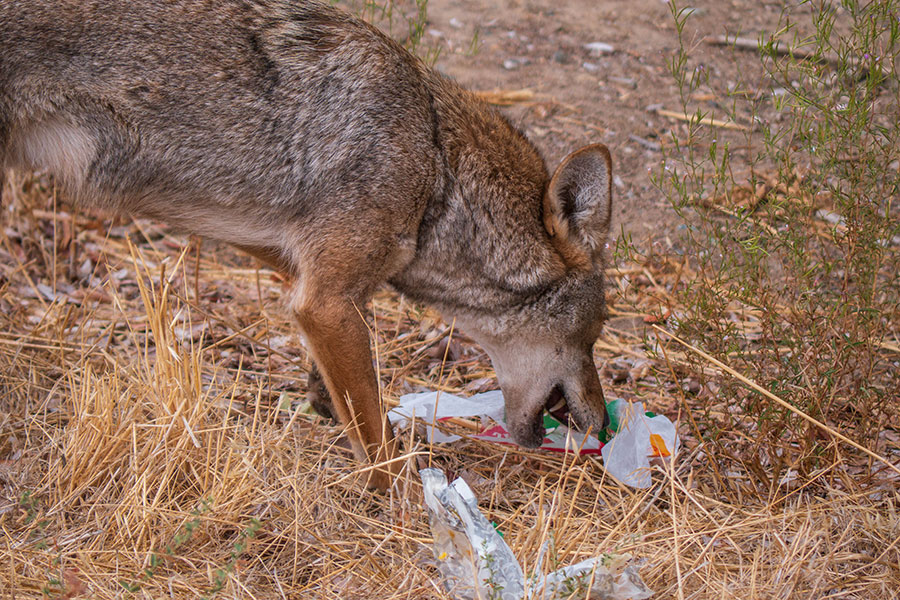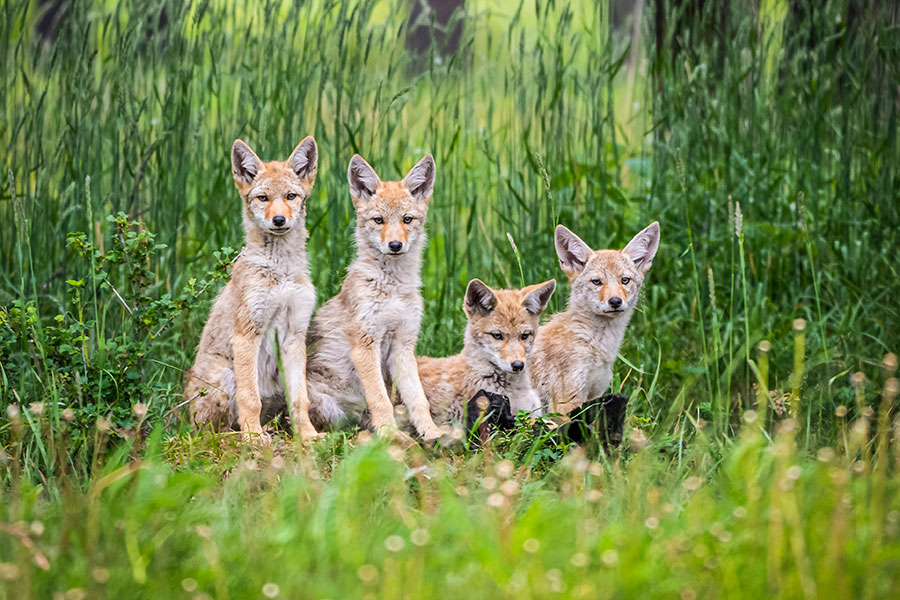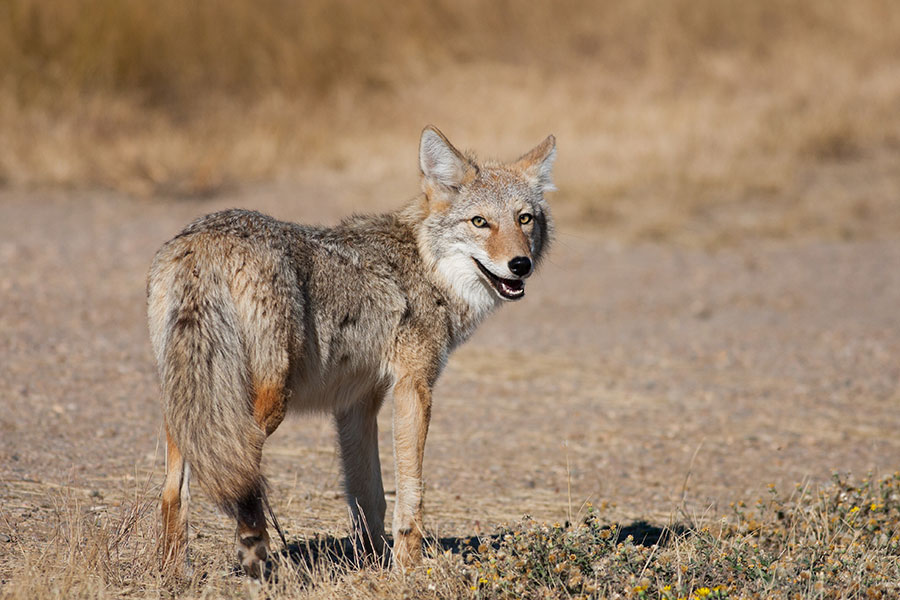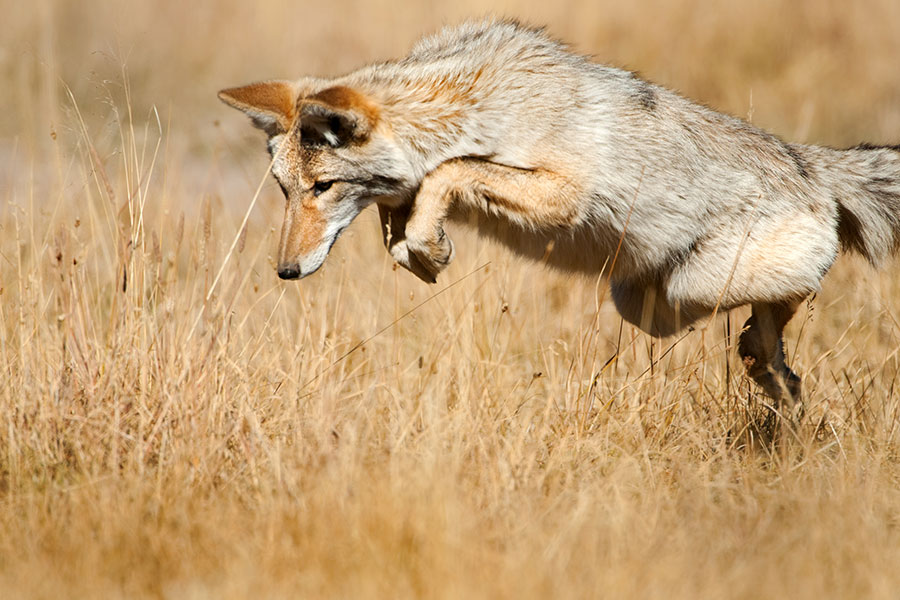“They don’t like people, but they like what people provide them”
It’s not unusual to see a coyote trotting down a city sidewalk or disappearing into a bush in an urban park, particularly in the evening or early morning. While some people may simply watch the oddly beautiful creatures go about their business uninterrupted, others may take the sighting as a bad sign.
But in some cases, like in Vancouver’s Stanley Park in summer 2021, large urban coyote populations were causing safety concerns for visitors, leading the Vancouver Board of Parks and Recreation to restrict park access between dusk and dawn. Recently in Edmonton, complaints about aggressive coyotes in the river valley were up 11% over the year previous.
It’s natural to worry about your safety and that of children and pets, but coyotes generally don’t want anything to do with humans, says Jade Murphy, wildlife expert and business expansion manager with WildNorth, an Alberta not-for-profit that rescues injured and orphaned wildlife.
“They don’t like people, but they like what people provide them,” says Murphy (Biological Sciences Technology – Renewable Resources ’16).
Coyotes’ opportunistic and omnivorous nature has helped them adapt to urban environments, she adds. And while they aren’t interested in humans, they are very interested in our food and our pets.
“They’ll eat anything from berries and the apples that fall off trees to meat and whatever else we put into our garbage and compost. And smaller pets like dogs and cats.”
Their ability to adapt to living in densely populated areas means that they won’t be going away anytime soon. Instead of fearing coyotes, Murphy says it’s best to learn how to coexist and respect our furry neighbours.
Don’t feed the wildlife! Seriously, don’t

Coyotes are very resourceful and don’t need extra help finding food. Murphy says that feeding coyotes can cause bold and aggressive behaviour in them, like what happened in Stanley Park.
“This is conditioned behaviour that comes from when humans are purposefully feeding them. Once they’ve experienced this, they will be prone to approaching or hanging around people, as they associate humans with food.”
While feeding wildlife may be well-intentioned, Murphy says that putting out food can be detrimental to them. In Stanley Park, aggressive behaviour led to the culling of 4 coyotes.
She also recommends keeping garbage and compost bins secured at all times. They’re an appetizing food source for coyotes when easily accessible.
Know when coyotes are most active – and protective

Coyotes can be seen anytime of day, but they are most active from dusk to dawn. This may seem sneaky to some, but Murphy says this relates to their lack of interest in interacting with humans.
“They’re smart enough to take advantage of us, yet smart enough to stay away from us.”
Spring breeding season is a time when Murphy suggests people take extra caution with coyote populations. Mother coyotes will find a safe and secure space for new litters of pups, such as in wooded areas in public parks.
“They’re smart enough to take advantage of us, yet smart enough to stay away from us.”
Make sure the spaces under decks and porches are sealed so you don’t face the possibility of having unexpected tennants.
“Like any animal, coyotes are protective of their young, so it’s key to give them their space during this time.”
Be big and be loud

What do you do if you actually encounter a coyote?
“Make a fool of yourself.”
Making yourself as big and tall as you can, and being as loud as possible, is the best way to scare off these animals, says Murphy. She suggests even throwing something like a rock or a stick in their direction (without hitting them) to scare them away.
It’s important to remain face-to-face with the coyote until it runs off. Turning your back and running is something Murphys says you should never do.
“Like with most wild animals, turning and running away just instigates the chase response in coyotes. They may see you as prey.”
Look out for your pets

Coyotes may have little interest in humans, but they have a great interest in family pets, particularly small dogs and cats.
According to Murphy, pet populations in urban centres is one of the reasons why coyotes have adapted so well. They will take any opportunity to make pets – particularly those under 25 pounds (or about 11 kilograms) – into prey.
Coyotes can scale a six-foot fence with ease.
Coyotes can scale a six-foot fence with ease, she adds, so keep a close eye on small dogs and cats, even in your own yard, especially during those twilight hours and times of the year when coyotes are most active.
Murphy also recommends keeping your pets on leashes when you’re walking them.
“If a coyote were to see a small dog off-leash and away from the owner, they will give chase, which opens a multitude of problems such as your dog running into traffic or actually being caught by the coyote.”
It’s not a happy thought, of course. But it’s nature – of which coyotes, pets and people are a part. Small measures can help ensure there’s room for each.
Originally published Sept. 24, 2021
Banner image by westportron/istockphoto.com